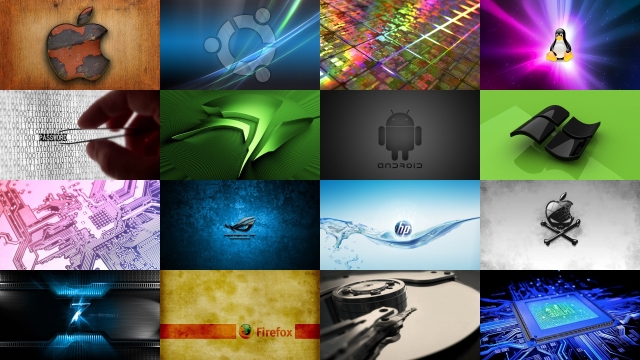
Technology has undoubtedly transformed the way we live, communicate, and even shape our reality. In recent years, a controversial and unsettling advancement has emerged from the depths of the digital world: deepfake technology. This innovative yet alarming tool allows users to create hyper-realistic fake videos or images by manipulating and superimposing faces onto existing footage. With a few clicks, anyone can become the protagonist of a fabricated scene, blurring the lines between fact and fiction like never before.
While deepfake technology has captivated the attention of researchers, filmmakers, and even enthusiasts, its implications extend far beyond entertaining or misleading content. As we delve into the depths of this uncanny valley, it becomes increasingly crucial to explore the dark side of deepfakes and the potential ramifications they may have for society. From political unrest to privacy breaches, the rise of deepfakes poses serious challenges that demand widespread awareness and effective countermeasures. Let us peel back the illusion and venture into the distinct reality of deepfake technology, unearthing the truths that lie beneath the surface.
Understanding Deepfake Technology
Deepfake technology is a rapidly advancing field that has gained significant attention in recent years. It refers to the use of artificial intelligence and machine learning algorithms to manipulate or generate visual and audio content that appears convincingly real. With deepfake technology, it becomes possible to superimpose someone’s face onto another person’s body or even create entirely fabricated videos that appear authentic.
The underlying principle behind deepfake technology lies in the concept of generative adversarial networks (GANs). By training these networks on a vast amount of data, they are capable of learning patterns and features that enable them to replicate the appearance and voice of a specific individual. Using this knowledge, deepfake algorithms can then manipulate existing video footage or create new content in which the targeted person is portrayed in a manner that may or may not reflect reality.
The potential implications of deepfake technology are both intriguing and concerning. While it offers opportunities for entertainment, such as in the film industry or for video game character creation, it also raises significant ethical concerns. Deepfakes have the potential to manipulate public opinion, perpetuate misinformation, and even be used maliciously to defame or blackmail individuals. Therefore, it is crucial to explore and understand the dark side of deepfake technology to develop necessary safeguards and legislation to mitigate its negative impact.
In the next section, we will delve deeper into some of the potential risks associated with deepfake technology and the challenges it poses to society as a whole. Stay tuned for a comprehensive analysis of the dark side of this rapidly evolving technology.
The Dark Side of Deepfake Technology
Deepfake technology, with its impressive ability to manipulate and generate hyper-realistic digital content, has undeniably gained significant attention and popularity in recent years. However, behind this seemingly awe-inspiring technology lies a dark side that cannot be ignored.
One of the most concerning issues arising from the use of deepfake technology is the potential for malicious purposes. In the wrong hands, this powerful tool can be exploited for various deceitful activities, such as spreading misinformation, defamation, and even blackmail. By creating convincing fake videos or images, individuals with ill intentions can manipulate public opinion, damage reputations, and incite chaos.
Moreover, another worrying aspect of deepfake technology is its potential impact on personal privacy and consent. With the ability to superimpose someone’s face into explicit or compromising situations, deepfakes can violate an individual’s rights and lead to the deterioration of trust within interpersonal relationships. From celebrities to ordinary people, nobody is safe from the invasive nature of this technology, which further exacerbates the need for robust measures to address its negative implications.
Furthermore, the rise of deepfake technology has the potential to undermine the credibility of visual evidence. As this technology advances, it becomes increasingly challenging to discern between genuine content and well-crafted deepfakes. This blurring of reality not only poses a threat to the justice system, where video evidence is often pivotal, but also erodes trust in media sources and fuels skepticism among individuals. This, in turn, can have significant consequences on society as a whole, distorting our perception of events and hindering discourse based on reliable information.
As the allure of deepfake technology continues to grow, it becomes imperative that we acknowledge and address the dark side that lurks within it. Stricter regulations, improved detection techniques, and increased awareness among individuals are essential to mitigate the potential harm caused by misuse of this technology. By unveiling the reality behind deepfakes, we can strive towards a future where the benefits of cutting-edge technologies are harnessed responsibly, ensuring a safer and more trustworthy digital landscape.
Addressing the Concerns and Ethical Implications
https://faceswap.akool.com/
The advancements in deepfake technology have raised valid concerns and ethical implications that cannot be ignored. As this technology continues to evolve, it is crucial to address these concerns and establish guidelines to mitigate potential harm.
One of the primary concerns surrounding deepfake technology is its potential for misuse and deception. With the ability to manipulate videos and images with such precision, there is a risk of individuals being deceived or manipulated into believing false information. This poses a significant threat to our society, as it can lead to the spread of misinformation and damage the credibility of reliable sources.
Another ethical implication of deepfake technology is the potential for non-consensual use. This technology can be misused to create explicit or defamatory content featuring unsuspecting individuals. This not only violates the privacy and dignity of those targeted but also raises serious legal and ethical questions regarding consent and the boundaries of personal rights.
Furthermore, the use of deepfakes in political contexts is a matter of concern. The ability to fabricate videos depicting politicians or public figures can have severe consequences on public trust and democratic processes. It is essential to address the issue of deepfake-generated political propaganda and ensure transparency and authenticity in political discourse.
In conclusion, the rise of deepfake technology brings forth a multitude of concerns and ethical implications. As a society, we must actively work towards establishing safeguards and regulations to combat the potential misuse and harmful effects of this technology. Failure to do so could undermine trust, disrupt societal harmony, and have far-reaching consequences.



